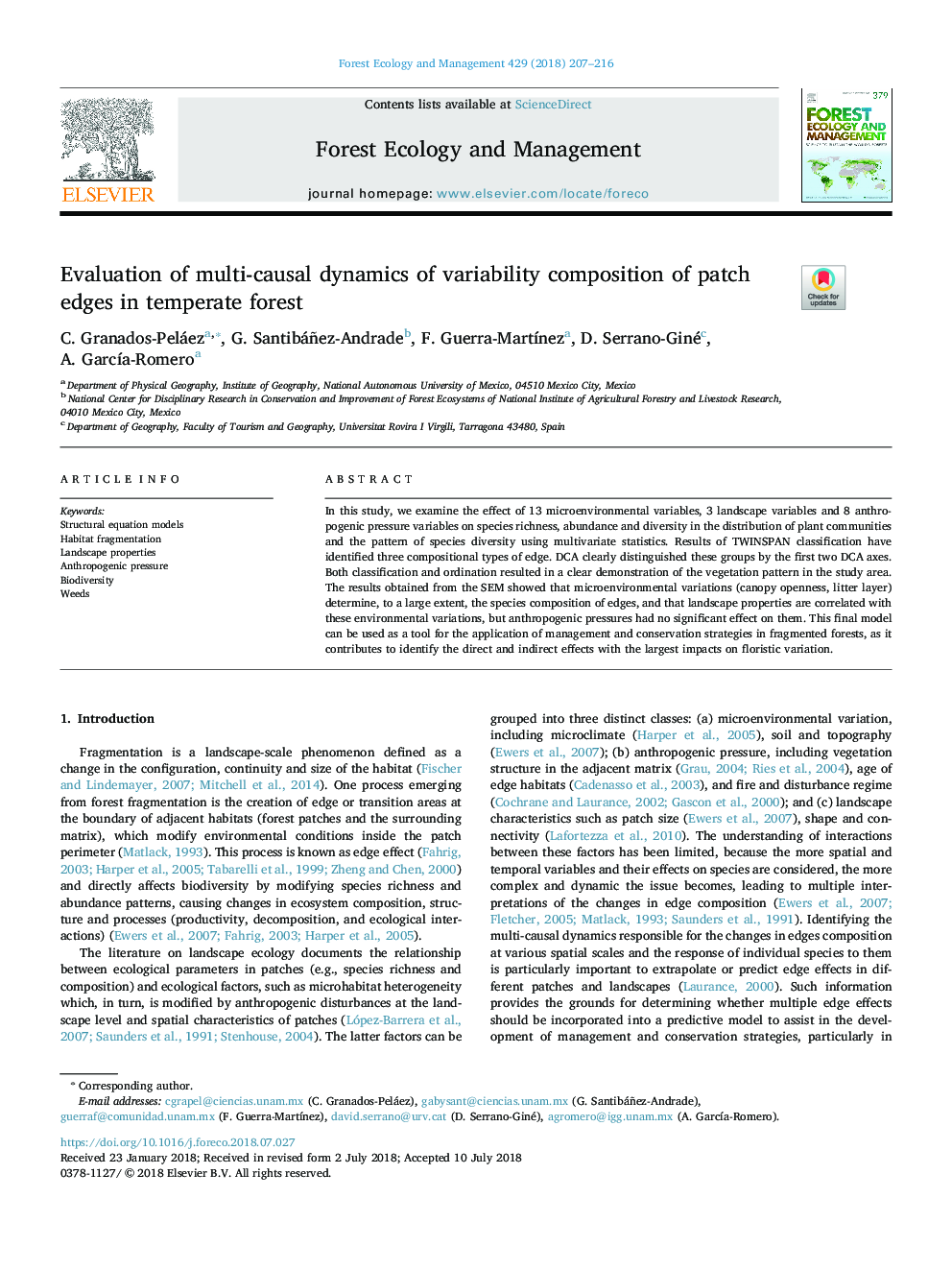| Article ID | Journal | Published Year | Pages | File Type |
|---|---|---|---|---|
| 6541433 | Forest Ecology and Management | 2018 | 10 Pages |
Abstract
In this study, we examine the effect of 13 microenvironmental variables, 3 landscape variables and 8 anthropogenic pressure variables on species richness, abundance and diversity in the distribution of plant communities and the pattern of species diversity using multivariate statistics. Results of TWINSPAN classification have identified three compositional types of edge. DCA clearly distinguished these groups by the first two DCA axes. Both classification and ordination resulted in a clear demonstration of the vegetation pattern in the study area. The results obtained from the SEM showed that microenvironmental variations (canopy openness, litter layer) determine, to a large extent, the species composition of edges, and that landscape properties are correlated with these environmental variations, but anthropogenic pressures had no significant effect on them. This final model can be used as a tool for the application of management and conservation strategies in fragmented forests, as it contributes to identify the direct and indirect effects with the largest impacts on floristic variation.
Related Topics
Life Sciences
Agricultural and Biological Sciences
Ecology, Evolution, Behavior and Systematics
Authors
C. Granados-Peláez, G. Santibáñez-Andrade, F. Guerra-MartÃnez, D. Serrano-Giné, A. GarcÃa-Romero,
